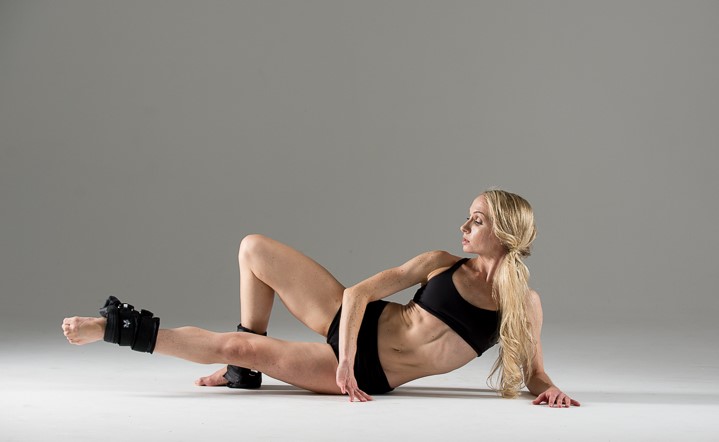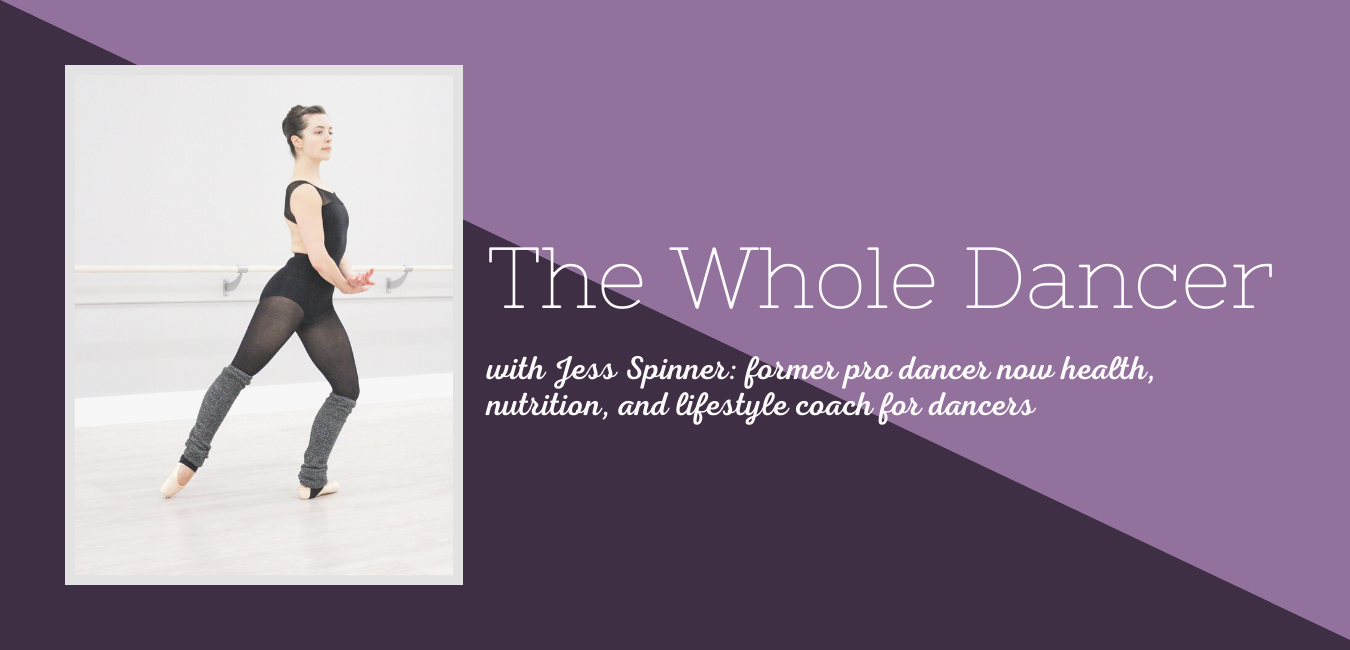Dancer Cross-Training: Avoid This Common Mistake
Guest post by Tanya Trombly of Bulletproof Ballerina
As a dancer, your most important tool is your body, right? So, why is it that you tend to so easily get caught up in practices and mindsets that destroy it?
I know what you are thinking: How can you say that? I do so much every single day to make my body and my ballet better! I’m constantly trying to improve and get healthier, leaner, stronger, more fit, more flexible, gain stamina, etc.

Ironically, this is exactly what is defeating you and preventing you from getting to your next level. Allow me to explain.
There’s no question that cross-training is becoming more popular in the dance world. As someone promoting dancer-specific cross-training, you would expect me to be 100% behind this new trend.
But to be honest, instead of being excited about ushering in this new age of cross-training for dancers, I’m actually quite concerned.
With the way most dancers view cross-training, there’s a good chance they’re doing even more damage to their bodies than if they weren’t cross-training at all.
Dancers have a tendency of taking things to the extreme, thinking more is better. In terms of cross-training, the traditional bunhead mindset will have you thinking the more you punish yourself, the more work you put in, the more classes you take, surely the more you will be rewarded for your efforts with ballet success.
But, this over-achiever quality will have you tearing down and destroying your body in your very efforts to enhance it.
Instead of using cross-training to accompany your art, as a method to elevate your body to another level and ready it for more intense dancing, it becomes just another item on your agenda for the day, another task to cross off your list, and a way to make yourself feel “worthy.”
As an artist and an athlete, your cross-training has to have a purpose – to support your ballet. And, that purpose doesn’t involve squeezing in a whole litany of exercises and extra classes every single day in addition to your already physically taxing technique class and rehearsal schedule just to get your “cross-training requirements” in.
I know your mindset. I’ve been there. You start doing a series of exercises one day in an effort to get better. The next day, you have to do that same amount of exercise or else you’ll feel guilty for slacking off.
Then, a few weeks later, you notice that you’re still not “good enough,” so you add in even more reps and exercises. Before you know it, you have a list of two hours-worth of exercises that you try to squeeze in before class or at night after you are exhausted from a long day of rehearsals.
You start to despise this routine. You dread doing this routine. But, you can’t stop. You have to do it every day. If anything, you must keep adding more onto your already exhausting schedule. Otherwise, you will lose progress and never get ahead. You’ll never be good enough. Sound familiar?
If the purpose of cross-training is indeed to make dancers more equipped and resilient in their art, why does it seem like the opposite results are trending? As cross-training is becoming more popular in the dance world, we are seeing more injuries and at younger ages.
It’s astonishing how many dancers are requiring surgery and major layoff periods when their bodies are in what should be their heyday. These injuries are not only detrimental to our precious bodies, but also devastating to our careers.
We only get a small window of opportunity to do our craft. With such short careers as it is, any time wasted on the sidelines where you can’t practice your art is gut wrenching. You can’t get that time back.

Yes, the dance world is constantly elevating and requiring more physicality from its dancers, but it shouldn’t be at the expense of its dancers. Something is wrong. And, I don’t think it’s because we can’t handle the new demands of our art, but because we are not training properly.
If we keep going overboard with our training, doing too much and burning out our bodies, injuries are bound to happen.
Exercise is a stressor. That’s what most people don’t realize. By its nature, exercise creates micro-damage to your body. This is an essential part of the super compensation process.
The rest and recovery period after an intense exercise bout is also an essential part of the process, but this is often neglected. If you don’t respect this concept and never give your body a chance to recover and actually reap the benefits from the work you are doing, you are going to end up just wearing your body down.
Instead of making it stronger and more resilient with cross-training, you will actually endanger your body by putting it in a perpetually weakened state, making it more vulnerable to injuries when you try to meet the heightened demands of this new generation of artistry and choreography.
Not convinced yet? Here’s something else to think about. Despite how invincible you might feel when you are younger, your body will automatically start to deteriorate at a certain age and after a certain amount of mileage.
If you think of your body as a sports car, you only get so much mileage out of it before it starts to break down, parts need to be replaced, and problems arise. If you run the car into the ground by putting tons of miles and unnecessary stress on it, it’s going to break down faster.
Instead of purring like a kitten and gracefully cruising when you rev the engine, it’s going to putter and awkwardly chug along. Likewise, if you are spinning your wheels every day doing these exercises you feel obligated to do because of your over-achiever mindset, you are just churning through your energy stores and wearing down your joints prematurely.
Not only are you not giving yourself the recovery time to heal your body, but these types of exercises are usually not intense enough to give you the muscular benefit you are looking for in the first place.
Instead of elevating your dance technique, you end up just burning through your allotted mileage that much quicker. Guess what that means? Shortened careers. Your longevity in your dance career is going to depend on how well you take care of your body.
Not only does this excessive cross-training lead to physical burnout but to mental burnout as well. By the time most dancers are in their late 20’s, they are already so sick of constantly pushing themselves with their obligatory exercises and physical commitments.
It’s exhausting to have this one-track mind, forcing yourself to wake up and put your body through the wringer every single day. Eventually the will power required to sustain this time-consuming effort will wear out.
The physical pain and mental turmoil just won’t be worth it, and you’ll end up quitting dance out of bitter resentment. Your love of the art will be dulled by putting yourself through this painful, exhausting process day after day – a process impossible to maintain forever.
It seems that every year the next generation of dancers coming into the professional field have more and more talent and physicality, elevating the art form.
The current level requires more from our bodies, and will continue to as the art advances. Unfortunately, that higher physicality comes with a price as more of us become injured as we attempt to keep up with the physical demands and compete with the rising talent. I don’t know that we should be okay with that sacrifice.
I’m here to change that. I want you to train in a way that gets you ready for the current demands of the dance world. We shouldn’t have to sacrifice our bodies and our health in order to do our art.
We need to start training differently…to accompany this different level of dance. We need to make our bodies more invincible in order to handle the demands of this advanced version of ballet.
I believe this can totally be achieved through cross-training…but, not cross-training in the traditional bunhead notion. Cross-training in the Bad Girl Ballerina realm…now, that’s a different story.
If you want longevity in your dance career, you have to learn how to respect your body and do the minimum that will elevate it without wearing it out unnecessarily.
photos of Tanya by Estilo Antunes (top) and Rachel Neville (bottom)
Guest post by Tanya Trombly
